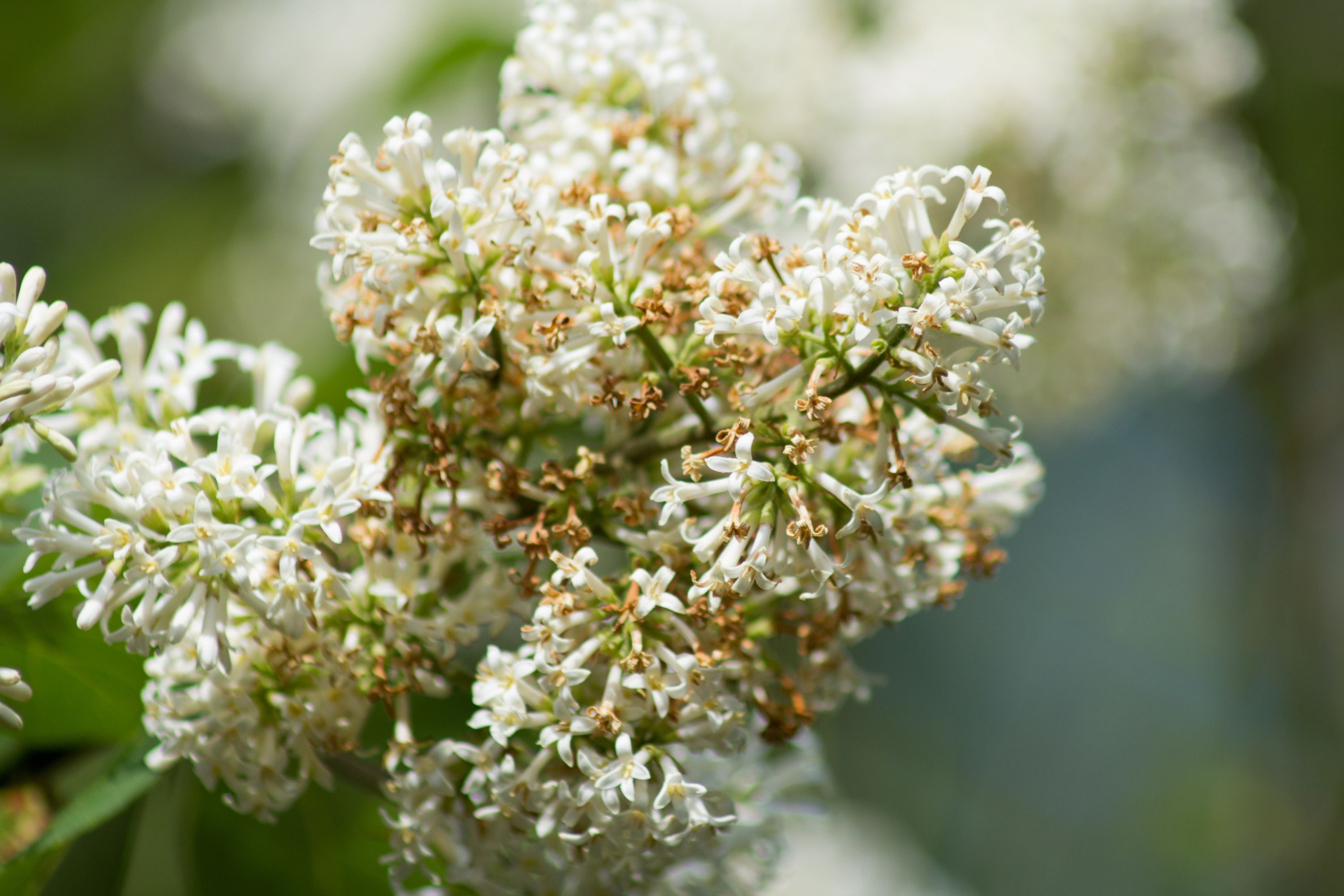Himalayan lilac
(Syringa emodi)

Description
Syringa emodi is a species in the genus Syringa, in the family Oleaceae. It is also known as Himalayan lilac. Height/Spread: Shrub to 5m in height, spreading to 4m. Stems: Vigorous, upright branches with robust branchlets and stout shoots. Bark is silver-grey and lenticellate. Leaves: Leaves are elliptic-oblong, measuring 9 cm to 15 cm in length and 5 cm in width, and are dark green and glabrous above and silvery-gray and slightly pubescent beneath when young. Flowers: Unpleasantly scented, purple, pale lilac, or white flowers are borne on upright, terminal panicles to 15 cm long. Tube measures 1 cm in length; lobes short, valvate, linear-oblong, and hooded at the tips. Anthers protrude about halfway. Flowers in early summer, from May–June. Fruit: Fruits September to October. Slopes at 2000-3000m altitude. Afghanistan, Pakistan, Western Himalaya, Kashmir (Ladakh), Nepal. Widely cultivated. Notable cultivars include: 'Aurea' 'Elegantissima' 'Variegata' Emodi is derived from the Sanskrit hima, meaning 'snow' (Sanskrit hima-alaya, identifies the Himalayas as the 'abode of snow'). Syringa is derived from the Greek word syrinx, meaning 'pipe' or 'tube'. Named for the use of its hollow stems to make flutes. In Greek mythology, the nymph Syringa was changed into a reed. Syringa (lilac) is a genus of 12 currently recognized species of flowering woody plants in the olive family (Oleaceae), native to woodland and scrub from southeastern Europe to eastern Asia, and widely and commonly cultivated in temperate areas elsewhere. The genus is most closely related to Ligustrum (privet), classified with it in Oleaceae tribus Oleeae subtribus Ligustrinae. Lilacs are used as food plants by the larvae of some moth species, including copper underwing, scalloped oak and Svensson's copper underwing. They are small trees, ranging in size from 2 to 10 metres (6 ft 7 in to 32 ft 10 in) tall, with stems up to 20 to 30 centimetres (7.9 to 11.8 in) diameter. The leaves are opposite (occasionally in whorls of three) in arrangement, and their shape is simple and heart-shaped to broad lanceolate in most species, but pinnate in a few species (e.g. S. protolaciniata, S. pinnatifolia). The flowers are produced in spring, each flower being 5 to 10 millimetres (0.20 to 0.39 in) in diameter with a four-lobed corolla, the corolla tube narrow, 5 to 20 millimetres (0.20 to 0.79 in) long; they are monoecious, with fertile stamens and stigma in each flower.
Taxonomic tree:







